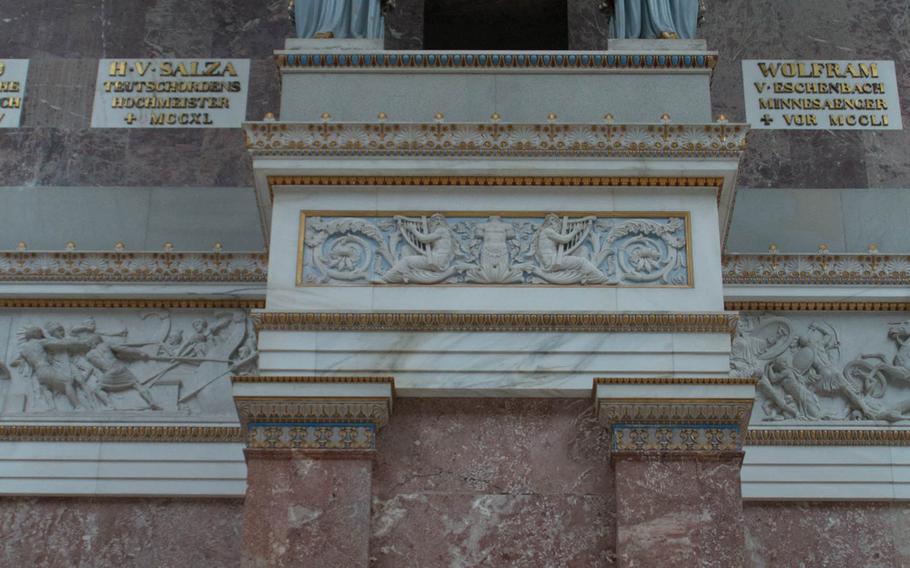
There are 191 historical figures, from humanitarians to heads of state on display within Walhalla. Each bust is matched with a biography that can be purchased at a kiosk in the front of the monument. (Michael S. Darnell/Stars and Stripes)
Nestled in the heart of Bavaria, on the banks of the fog-blanketed Danube River, lies a hidden gem, perfect for amateur historians and sightseers alike.
Walhalla — named for the Norse mythical haven where the souls of deceased warriors would be brought to rest — is a monument to the mostly German citizens who have carved out the region’s history.
The monument is a white-pillared hall that sits atop a grassy hillside in the village of Donaustauf, and it houses marble busts of famous German, Austrian, Swiss and Dutch citizens. Within its walls, the likenesses of ancient kings and queens sit alongside busts of more modern luminaries such as Albert Einstein and Richard Strauss, the famed German composer.
In the midst of the smaller statuary sits a full-size sculpture of Ludwig I, the king of Bavaria, who was responsible for the creation of the monument. Ludwig began planning the monument as far back as 1807, but a suitable builder wasn’t found until 1827, when notable architect Leo von Klenze was chosen to lead the project. Walhalla wasn’t completed until 1847, making it one of Europe’s relatively newer historical sites.
Since then, 191 historical figures have been enshrined at Walhalla, either with a bust or an inscribed tablet. History buffs can pick up a walking tour guide on site that gives a brief biography of each person represented.
For travelers unimpressed by historical figures, the site itself is a marvel of construction and simplistic beauty well worth the visit. During the summer, visitors can take a boat down the Danube where they’ll be greeted by Walhalla as it’s really meant to be seen, an architectural wonder that springs from the surrounding forest with gleaming pillars and detailed trim.
Those who venture to Walhalla during the winter can still see this view, but they’ll have to brave the steep climb down — and back up — 358 marble steps. Be forewarned, while the climb is most definitely worth the resulting view, it’s not for the injured or out-of-shape. There is also an approach accessible on foot and by wheelchair all year round.
The entire monument can be seen in less than an hour, making it a perfect stop for people interested in a trip to the countryside, or for sightseers heading to nearby Regensburg.
Walhalla might not be the most famous tourist destination in Germany, but it’s an absolute must for travelers looking to take a quick trip to one of the most beautiful sites in Bavaria.
DIRECTIONS: Address: Walhalla Verwaltung, Walhalla Strasse 48. (GPS keywords: Walhalla, Regensburg)
TIMES: 9 a.m.-5:45 p.m. April-September; 9 a.m.-4:45 p.m. October; 10-11:45 a.m./1-3:45 p.m. November-March; closed: Dec. 24-25, Dec. 31 and Shrove Tuesday.
COSTS: Entrance: 4 euros adults; 3 euros for those over 65, disabled, students and military with ID; free for children under 18 accompanied by parents. Self-tour booklet costs 5 euros.
INFORMATION: Website: walhalla-regensburg.de/english; Phone: (+49) (0)9403-961-680.